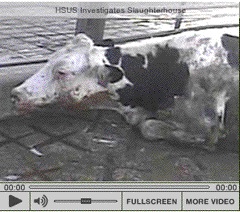Try harder.
Because when communicating about science with the public, the U.K. Food Standards Agency really sucks.
 So when some FSA-type (right, not exactly as shown) writes,
So when some FSA-type (right, not exactly as shown) writes,
“We pride ourselves on being a science-based organisation and on putting the consumer first, so the big question we deal with on a daily basis is: how do you maintain scientific accuracy while making the science easy for people to understand?”
I may have just thrown up a little.
This science-based organization has apparently decided – against all available scientific evidence – that the best advice for cooking whole poultry is until it is “piping hot.”
This is scientifically inaccurate, and as a lowly member of the public, I don’t know what it means.
The FSA-type further writes:
“Effective communication is about thinking how messages are received rather than how they are sent out.”
Awesome. Can you provide the research which shows actual consumer behavior interpreting the message of piping hot?
And he further writes:
“To be heard and heeded, too, our advice needs to be succinct and easy to understand but also accurate. So, over to you, how do we get the balance right?”
FSA advice to cook poultry until piping hot is inaccurate – color is a lousy indicator, a tip-sensitive thermometer is required to ensure the bird has reach an internal temperature of at least 165F or 74C, and piping hot may be meaningful in a Mary Poppin’s movie but not in a microbiologically safe kitchen. There is no balance to strive for when the information is wrong.
Get the science right, then work on the flair.
